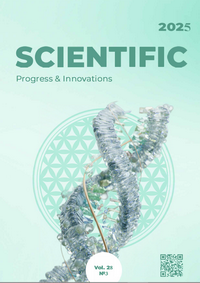Identification of Bacillus amyloliquefaciens isolated from quails and selection of promising strains based on the main typical properties
DOI:
https://doi.org/10.31210/spi2025.28.03.32Keywords:
Bacillus spp., identification, Bacillus amyloliquefaciens, metabolic activity, promising strains, synbioticsAbstract
The article is devoted to solving the problem of increasing the production volumes of high-quality and safe products in the poultry farming sectors of Ukraine by developing and applying cheap, effective, natural biological preparations as an alternative to antibiotics to maintain stable epizootic situation in poultry farming and reduce epidemic risks to humans within the framework of the “Single Health” and Global Health Protection strategies. In this area of work, non-pathogenic, spore-forming bacteria of Bacillus genus are of interest because they are resistant to environmental conditions and capable of producing large amounts of secretory proteins, enzymes, anti-microbial compounds, vitamins and carotenoids. Therefore, the article presents the results of microbiological studies of 167 samples of ligated quails’ intestines to isolate and identify Bacillus spp. and to identify bacteria of Bacillus amyloliquefaciens species based on typical morphological, cultural, and biochemical peculiarities. These strains were further studied, and the prospects of their using to make symbiotic preparation were determined. From the inoculum, 123 (73.7 %) isolates of Bacillus spp. were isolated with the morphology characteristic of bacilli and cultural growth on MPA and MPB. Among the isolated bacilli, 7 (5.7 %) cultures of Bacillus amyloliquefaciens bacteria were identified, which was confirmed by the characteristic typical indicators of metabolic activity: the absence of bacterial growth at 50 °C under anaerobic conditions, in the presence of high concentrations of sodium chloride, in the absence of nitrate reduction and citrate utilization, in the absence of indole and hydrogen sulfide production, and in the absence of carbohydrates fermentation including lactose, arabinose, raffinose, cellobiose, galactose, and salicin. At the same time, the experimental isolates split starch, hydrolyzed esculin and casein, utilized succinate, formed oxidase, produced catalase, and fermented carbohydrates such as glucose, mannitol, xylose, and fructose. The research results of experimental bacilli isolates confirmed the presence of all the main typical properties characteristic of Bacillus amyloliquefaciens species. Based on the obtained data, the experimental cultures of Bacillus amyloliquefaciens were transferred to the strain category and subjected to deep freezing in cryo-tubes for further testing to study their antagonistic properties against Gram-positive and Gram-negative bacteria and other requirements for promising synbiotic strains.
Downloads
Published
How to Cite
Issue
Section
License
Copyright (c) 2025 Scientific Progress & Innovations

This work is licensed under a Creative Commons Attribution 4.0 International License.

 Creative Commons Attribution 4.0 International Licens
Creative Commons Attribution 4.0 International Licens